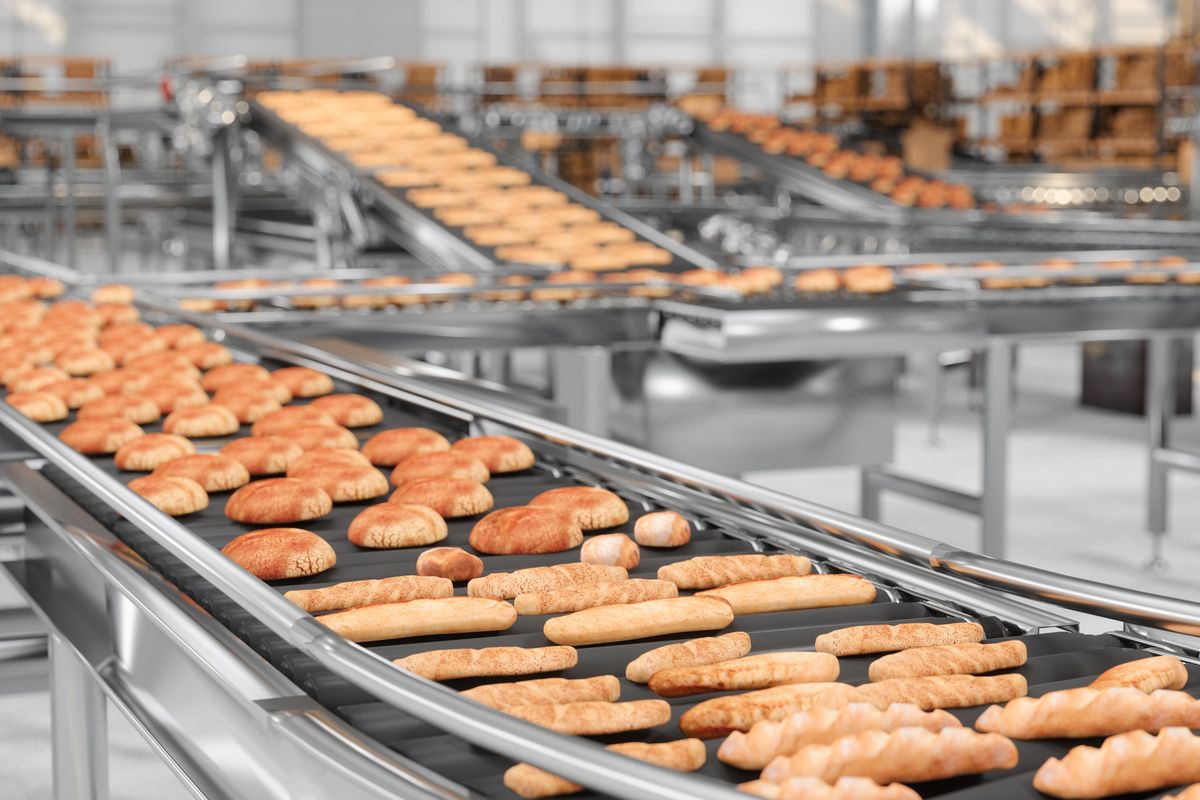Last year was one to forget for the commercial food equipment industry in the U.S. Earnings reports from multi-industrial companies like Illinois Tool Works and Dover Corp contained references to the softness in sales in 2017, while the message from pure-play food equipment companies like Wellbilt Inc. and The Middleby Corporation was pretty much the same. Is it part of a reversal of a trend, or merely a blip that's creating a buying opportunity in the sector, especially in a stock like Middleby, which has risen recently on hopes of a turnaround? Let's take a closer look.

Fast casual dining growth has slowed in recent years. Image source: Getty Images.
Trend reversal
According to data from the Commerce Department, April 2015 marked the date when U.S. consumers started spending more in restaurants and bars then they did in grocery stores.

Data source: Department of Commerce. Millions of U.S. dollars.
However, investors who thought an inexorable investing trend had been established would have had a rude awakening in 2017. The following data highlights just how difficult conditions were in the U.S. commercial food equipment sector in 2017.
|
Company |
Organic Sales Growth |
Q1 2017 |
Q2 2017 |
Q3 2017 |
|---|---|---|---|---|
|
Dover Corp (DOV 0.20%) |
Food Equipment |
(3%) |
1% |
(2%) |
|
Illinois Tool Works (ITW +0.05%) |
Food Equipment -- North America |
1% |
(1%) |
(4%) |
|
The Middleby Corporation (MIDD 0.27%) |
Overall Company |
(3.4%) |
(3.4%) |
(2.1%) |
|
Wellbilt Inc. (WBT +0.00%) |
Americas |
0.3% |
2.3% |
(4.3%) |
Data source: Company presentations. Table by author.
What management said
The commentary from the various companies' presentations indicates the difficulties in 2017. For example, Illinois Tool Works -- a company that is otherwise performing admirably -- believes the long-term growth rate for its food equipment segment is 4%-5%, but it's only forecasting 1% for 2017 and 2%-3% for 2018.
Meanwhile, Dover Corp's "Food Equipment results reflect a continued softness in our commercial cooking equipment markets," according to CFO Brad Cerepak on the third-quarter earnings call. Wellbilt saw "softness in the Americas" according to CEO Hubertus Muelhaeuser.
Turning to Middleby's CFO Tim Fitzgerald claimed on the company's earnings call: "The modest sales growth reflects lower sales with our major restaurant customers, as they have slowed replacement purchases in advance of expected new equipment approvals in the upcoming quarters." An argument that implies the possibility of a bounce-back in sales in the coming quarters.
Middleby's unconvincing arguments
Speaking on the earnings call, Middleby's CEO Selim Bassoul argued there were three trends affecting U.S. markets in 2017, and all three continue the theme that a return to sales growth is a near-term possibility.
- Management changes at "most of our customers" have slowed capital spending decision-making.
- Restaurants' investment focus shifted toward delivery systems and mobile applications.
- The difficulty of acquiring labor is holding back investment.
Of course, all of these factors are reversible and suggest that things could turn around in due course. For example, new managements will bed in, restaurants still have to provide good food, and increased automation is ultimately the solution to labor shortages. The bad news is it's not an entirely convincing case from Middleby's management, but the good news is, it may not even matter.
Bassoul's arguments aren't convincing because all of the other companies discussed above have cited difficulties in the U.S. in 2017 -- so it's not just a question of Middleby's customers or new equipment approvals. Furthermore, industry and consumer data suggest a slowdown took place in 2017.
Breaking out food service and drinking places spending data in terms of growth shows a notable slowdown in 2017.

Data source: Department of Commerce. Chart by author.
Why it doesn't matter
I have three arguments for why this doesn't matter.
First, as you can see above, there was an uptick in growth in spending in December, and this is matched by a recent increase in the National Restaurant Association Restaurant Performance Index (RPI) -- a widely followed piece of industry data.
Second, the expectations index rose for the third straight month to November with a reading of 102.6 -- a reading above 100 indicates expansion. Similarly, 60% of restaurant operators "plan to make a capital expenditure for equipment, expansion or remodeling in the next six months," according to the latest report.

Data source: National Restaurant Association. A figure above 100 indicates expansion.
Third, it's clearly not a structural problem in the industry because international operations have been doing fine. Welbilt saw strong growth in Europe (up 9.9 organically) and Asia-Pacific (up 8%) in the third quarter, while Illinois Tool Works' international food equipment & services sales grew 4% in the same period.
What to do with the sector
There doesn't appear to be any kind of structural problem in the commercial food equipment sector, and the slowdown in 2017 is possibly just a natural correction from the mid to high single-digit rates of growth achieved in the 2014 to 2016 period.
However, for now, it's probably better to sit and wait for a few more months of hard evidence of a turnaround before piling into the sector with stocks like Middleby or Wellbilt.








